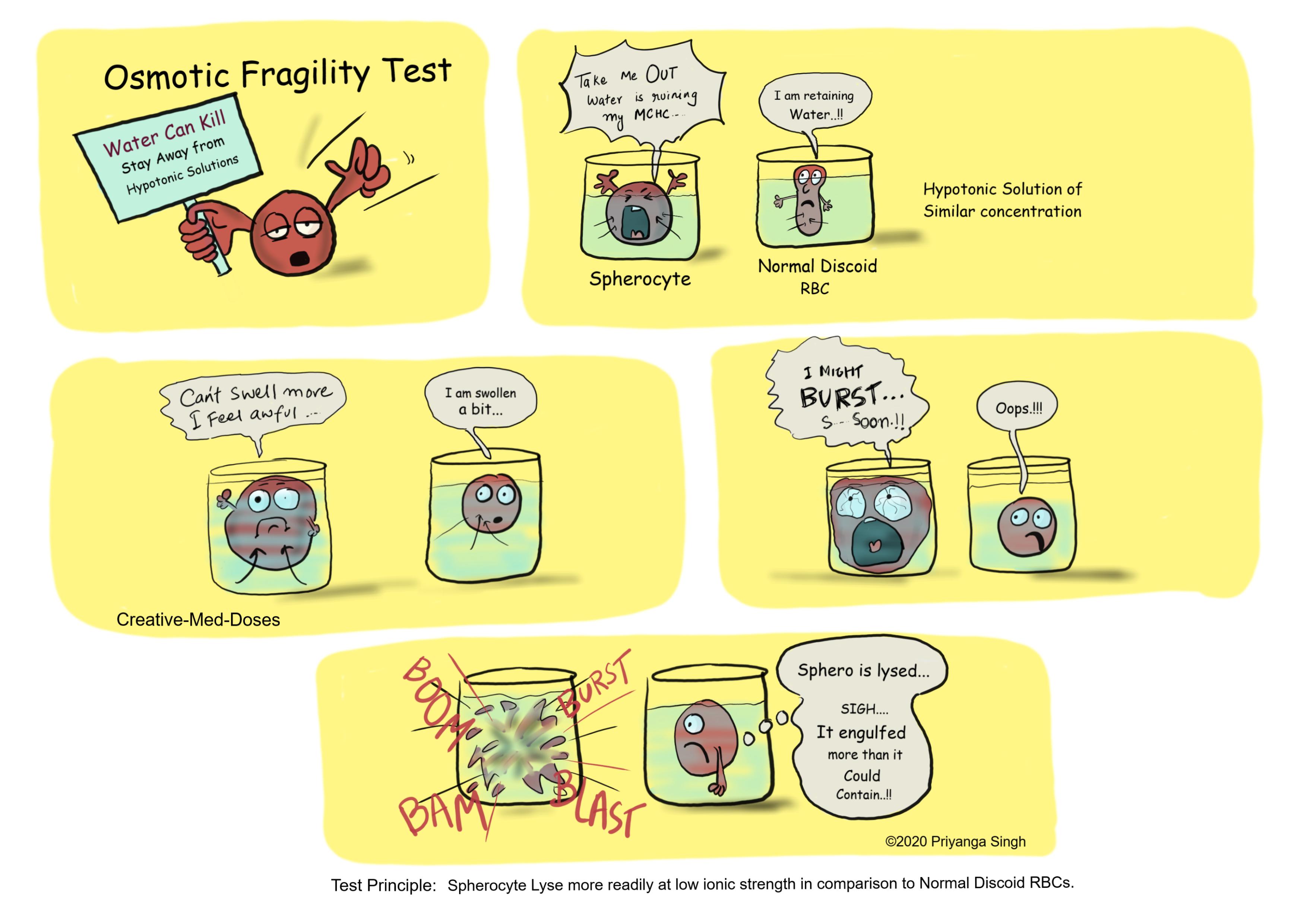Osmotic Fragility Test (OFT)
The osmotic fragility test (OFT) is performed to measure erythrocyte resistance to hemolysis in varying levels of serial dilution of a saline solution/ hypotonic solution. When cells are exposed to a hypotonic environment, water enters the cell and causes swelling and cell lysis. The osmotic lysis of erythrocytes depends upon surface area to volume ratio of given cell.
In this test 2-6mL minimum of fresh blood is added to a series of solutions with tonicity ranging from 0.1%-0.9%. These samples are centrifuged with absorbance reading at 540 nm to calculate the percentage of hemolysis for each solution. Results are then plotted against the NaCl concentrations, yielding an osmotic fragility curve that is then compared to obtained normal control values.
The osmotic fragility test is used to measure and compare the degree of hemolysis in patient’s blood, and control sample.
...

...
Conditions associated with increased osmotic fragility have erythrocytes with smaller ratio of surface area to volume and are more susceptible to osmotic stress. Spherocytes are very susceptible for hypotonic solution lysis.
- Hereditary spherocytosis
- Autoimmune spherocytosis
The conditions are associated with decreased fragility have increased surface area–to–volume ratio.
- Thalassemia
- Iron deficiency anemia
Reference video https://www.youtube.com/watch?v=Gp8BpDrUqZg#action=share
Revision for today https://creativemeddoses.com/topics-list/hereditary-spherocytosis-intrinsic-hemolysis/
Buy books here – these books can be read only on amazon kindle app which you can download on any device. https://www.amazon.com/Osteopetrosis-brittle-stony-bone-review-ebook/dp/B0819TLBQF/ref=pd_sbs_351_1/131-0709266-5647742?_encoding=UTF8&pd_rd_i=B